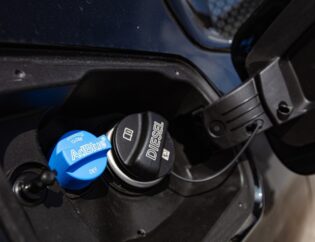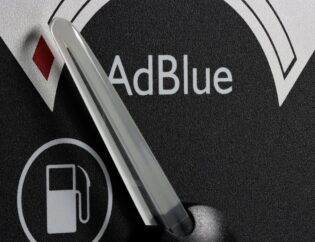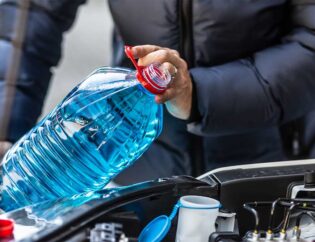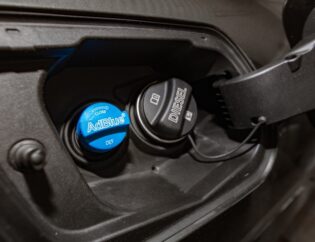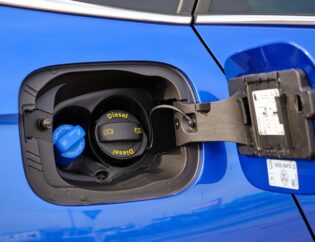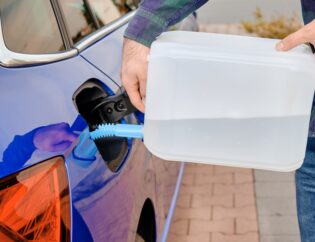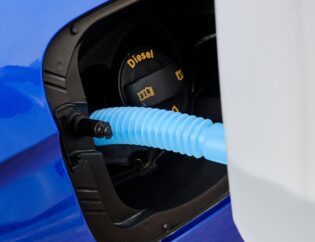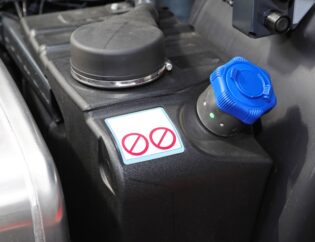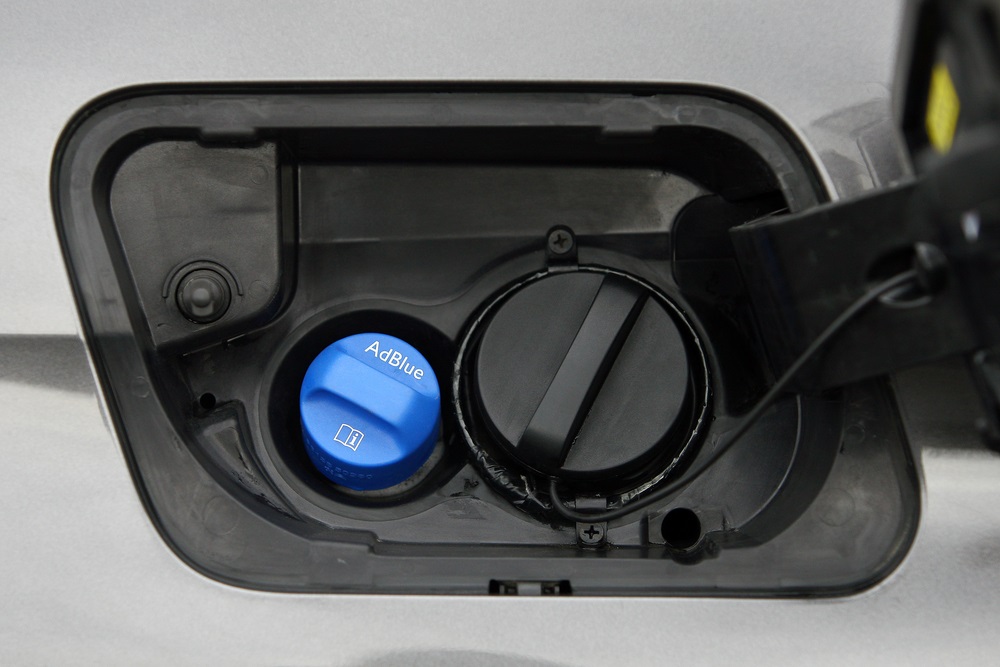
Urea and deionized water are the two primary components of DEF. When heated, the nitrogen-based molecule urea transforms into ammonia. The DEF breaks down into ammonia when it is injected into the exhaust stream. Ammonia then combines with nitrous oxides (NOx) to produce water vapor and nitrogen gas. Up to 90% of the NOx emissions from the tailpipe are reduced by this chemical process.
DEF effectively converts harmful NOx gases into harmless nitrogen and water. Reducing NOx emissions helps mitigate smog, acid rain, and respiratory problems caused by diesel exhaust. Most modern diesel engines cannot run without a supply of DEF, as it is required for the normal operation of the SCR system.
DEF is specially formulated to withstand the temperatures and conditions of diesel engine exhaust systems. It is a colorless, non-toxic liquid that does not pose major safety hazards. However, DEF can begin to crystallize and freeze below 12°F (-11°C). We’ll examine the freezing properties of DEF and how to prevent and deal with frozen DEF later in this article by Azure Chemical.
Contents
Freezing Point of DEF
Diesel Exhaust Fluid (DEF) is an aqueous urea solution that lowers NOx emissions in diesel engines. The freezing point of DEF is determined by the urea concentration in the solution.
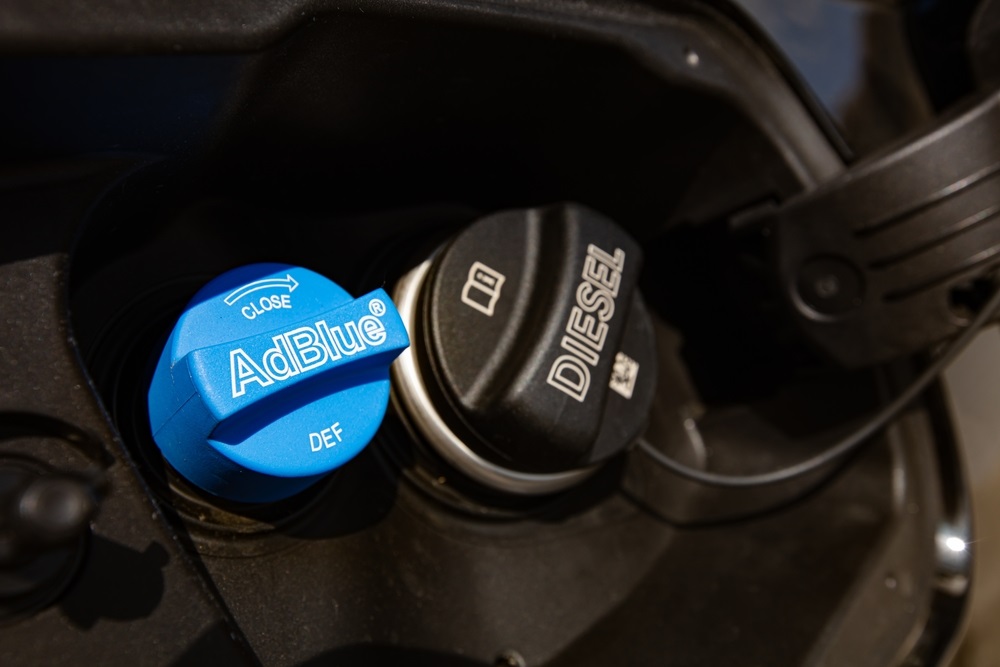
Today, DEF in most diesel vehicles contains 32.5% high-purity urea and 67.5% deionized water. This concentration results in a freezing point of 12°F (-11°C). Once the temperature drops below 12°F, DEF will begin to freeze and turn into a solid.
The freezing process starts with forming small crystals in the liquid as it cools. Over time, these crystals accumulate and join together as the temperature decreases. Eventually, the entire volume of DEF will solidify into a frozen mass.
The precise freezing point of DEF can vary slightly based on factors like impurities and density. But for standard 32.5% urea solutions, the freezing point remains right around 12°F.
Monitoring the freezing point is crucial for diesel vehicle operation in cold climates. Frozen DEF can clog injector lines and cause the SCR system to stop working.
Effects of Frozen DEF
Freezing diesel exhaust fluid (DEF) in the DEF tank or lines can cause major issues for diesel vehicles that rely on the DEF system.
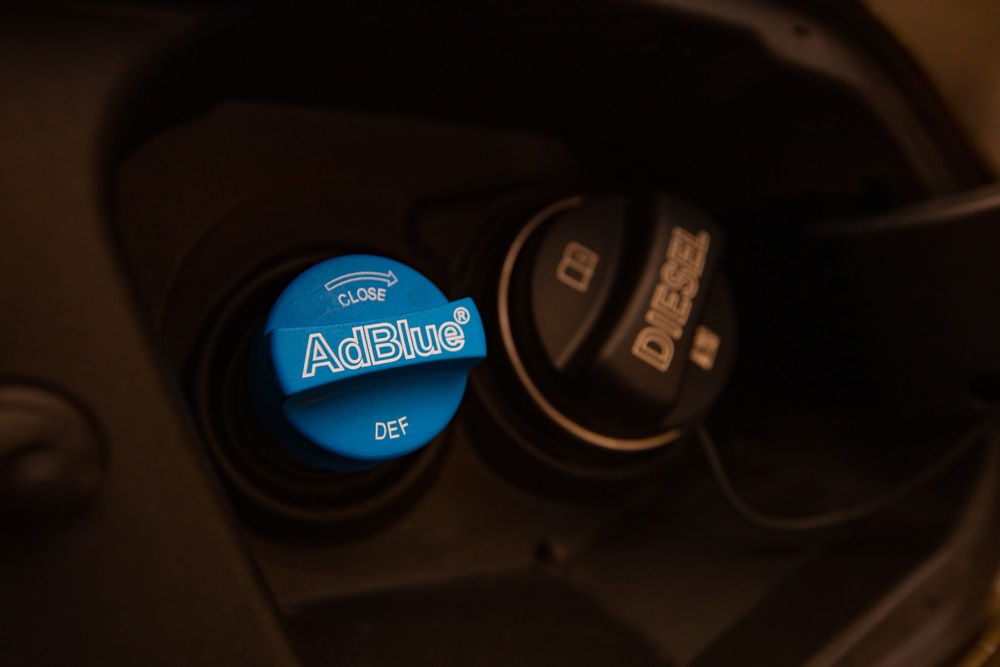
The most significant effects of frozen DEF are:
Unable to Spray Into Exhaust
DEF needs to spray into the hot exhaust as a fine mist to enable the catalytic reaction that reduces NOx emissions. When DEF freezes into a solid block of ice, it can no longer be pumped through the lines or sprayed through the injector. This renders the entire DEF system useless until thawed.
Engine Derate or No Start
Most diesel vehicles have a “freeze protection” feature triggered when DEF freezes. This will limit engine power (called a derate) or prevent the engine from starting. This safeguard prevents trucks from emitting too much NOx when DEF is unavailable. Drivers will get a warning message about frozen DEF before the derate or no-start condition begins.
In summary, frozen DEF shuts down the DEF system and prevents the vehicle from operating normally. Thawing the frozen DEF is critical to get the truck back up and running. Drivers who operate in cold climates must be diligent about preventing DEF freeze-ups to avoid being stranded on the roadside. Proper maintenance and freeze protection measures are essential.
Where is DEF Located?
Diesel exhaust fluid (DEF) is stored separately from the diesel fuel tank. DEF tanks are typically made of plastic due to the corrosive nature of DEF fluid.
The DEF tank is on the vehicle chassis, often under the cab or along the frame rails. Since it is mounted on the vehicle’s exterior, the DEF tank and lines are exposed to ambient temperatures. Unlike other fluids in the engine bay, the DEF system sees the same temperatures as the surrounding environment.
This means the DEF tank and supply lines are vulnerable to freezing in cold weather. Areas like the northern United States and Canada frequently see below-freezing conditions in winter. Trucks driving cross-country or operating at higher altitudes also risk DEF freezing due to lower temperatures. The DEF system was not designed to be fully enclosed since the fluid needs to be supplied on demand when dosing the exhaust.
Conditions That Cause DEF Freezing
Diesel exhaust fluid (DEF) can freeze when exposed to sufficiently cold temperatures.
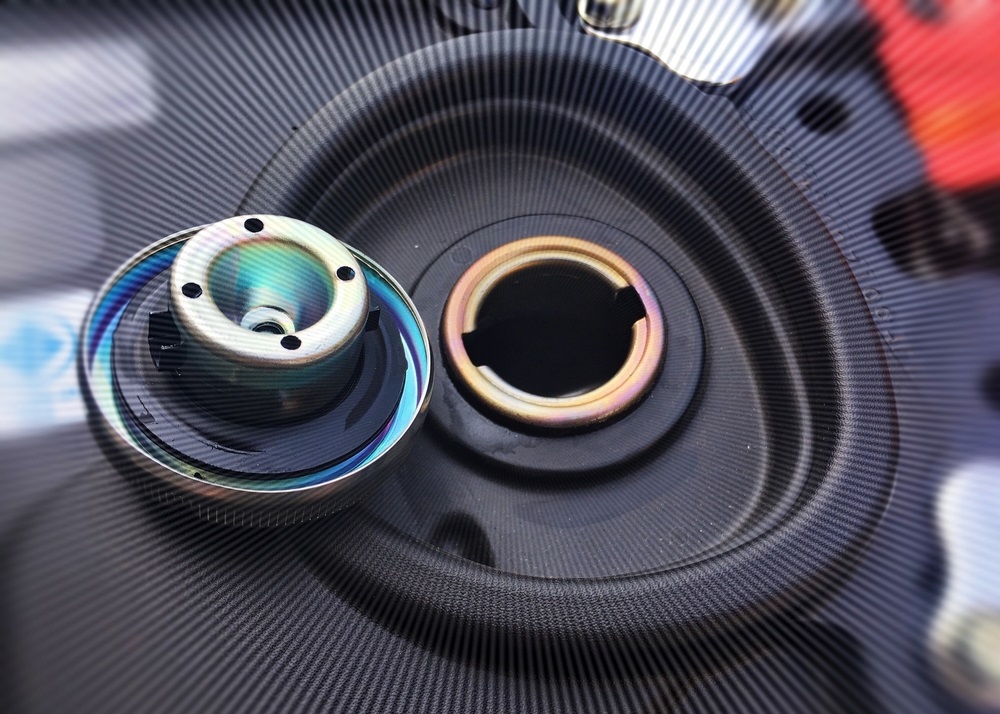
Some of the most common conditions that can lead to DEF freezing are:
Cold Weather
DEF freezes at around 12°F (-11 °C). In areas with cold winters, temperatures can drop below the freezing point of DEF, especially overnight and during long idle times. Even when daytime temperatures are above freezing, DEF lines and tanks can accumulate ice if exposed to freezing temperatures.
Long Idle Times
Trucks that sit idle for extended periods allow DEF systems to cool to ambient temperatures. Long idle times, like overnight parking or weekend downtime, give DEF enough time to reach freezing temperatures during cold weather. This allows ice crystals to start forming in DEF lines and tanks.
Low DEF Levels
A full tank of DEF takes longer to freeze than a partially full tank since the larger thermal mass retains heat better. Low DEF levels are more prone to freezing since less liquid absorbs the cold. Tanks less than half full during freezing conditions are at high risk of slushy or frozen DEF.
Keeping DEF from freezing in cold conditions requires preventing these three factors. Truckers can avoid frozen DEF issues during cold weather by maintaining adequate DEF levels, minimizing idle time, and storing vehicles above freezing when possible.
Preventing DEF Freezing
Keeping your diesel exhaust fluid from freezing is crucial to maintaining proper emissions control and engine performance.
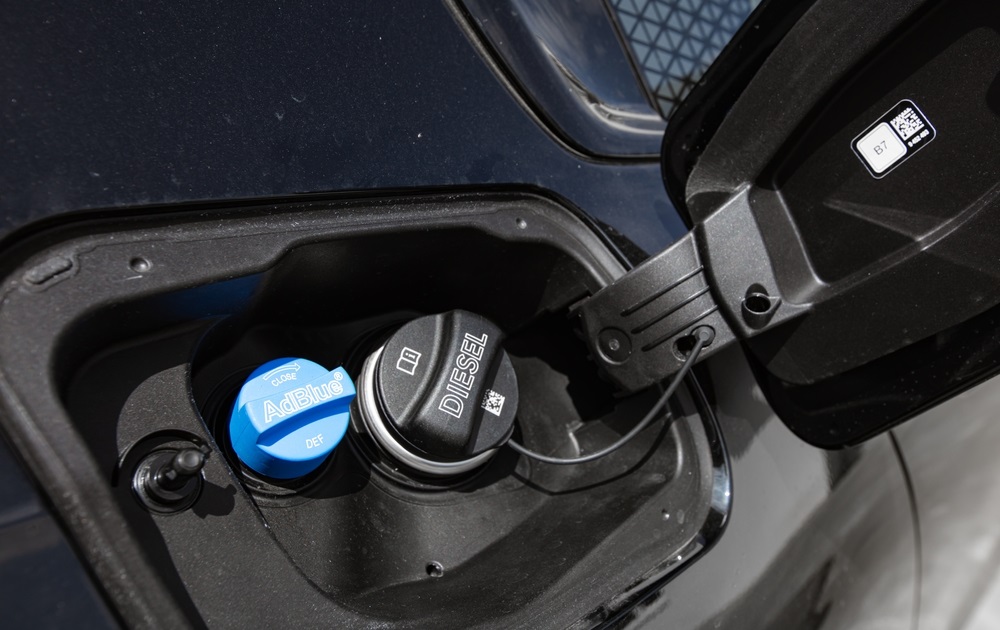
Here are some tips to prevent DEF freezing:
- If possible, park your vehicle in a garage or other enclosed space to protect the DEF tank from freezing overnight or during cold weather. This will help maintain DEF fluidity.
- Many diesel trucks have DEF tank heaters installed to warm the fluid in cold conditions. Ensure these function properly, and turn them on when parking in frigid temperatures. Tank heaters will keep DEF thawed.
- A full DEF tank is less susceptible to freezing than a tank low on fluid. Keep the DEF tank above 50% full during winter to allow less room for ice crystal formation. The smaller capacity minimizes exposure to freezing air temps. Topping off the tank regularly prevents freeze-ups.
Simple preventative measures can stop your diesel exhaust fluid from freezing in cold weather. Storing your truck warmly, using tank heaters, and keeping the DEF tank over half full will maintain fluidity and prevent problems from frozen DEF. With proper precautions, you can avoid frozen DEF complications.
Thawing Frozen DEF
If your DEF has frozen, there are a few methods you can use to thaw it:
Let Your Truck Idle
Idling the engine will generate heat that can help warm up and thaw the DEF tank. Let your truck run for 30 minutes to an hour to allow the heat to transfer to the tank and melt any frozen DEF.
Store in Warm Garage
If possible, move your truck into a heated garage overnight. The warmer ambient temperatures will help to freeze DEF faster than leaving the truck outside.
Use a Heat Gun
A heat gun is an easy way to apply heat to the DEF tank and lines directly. Slowly sweep the heat gun over the tank, careful not to overheat any components. The heat will gradually thaw the DEF. Monitor the tank and lines until fully thawed.
Thawing frozen DEF properly is important to avoid damage to the system. Do not try to force frozen DEF through the lines, and avoid excessive heat that could harm the tank or pump. You can return your frozen DEF to a liquid state with a little time and added heat.
Additives to Lower Freezing Point
Adding additives to diesel exhaust fluid (DEF) to lower its freezing point is not recommended and can cause problems.
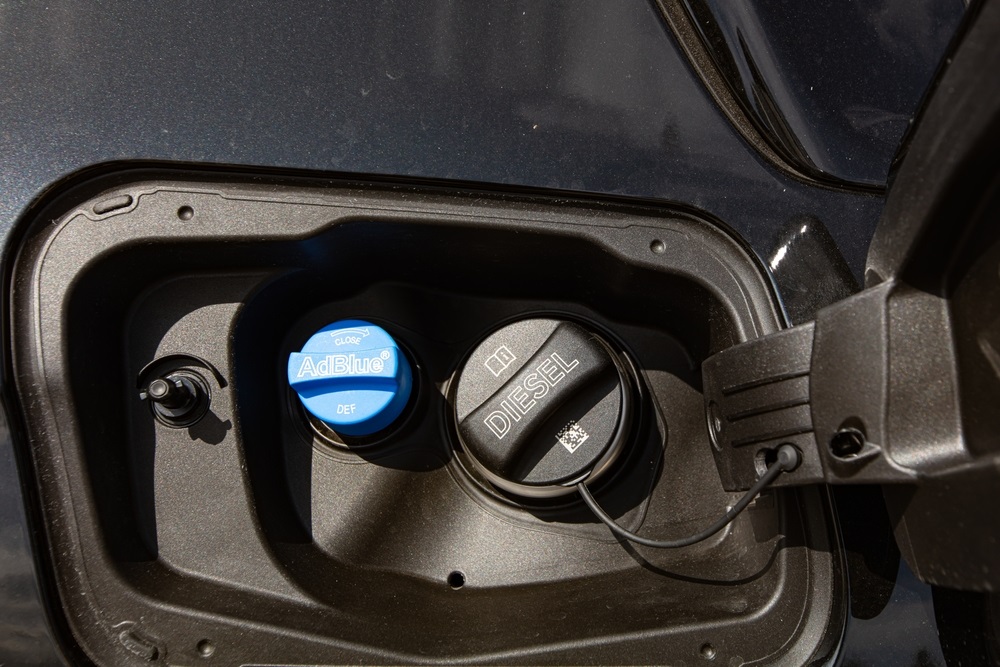
DEF is formulated to meet strict specifications; adding anything can compromise its quality and effectiveness.
Some key problems with DEF additives include:
- Diluting the urea concentration
- Potential damage to SCR systems
- Voided warranties
- Degraded emissions performance
- Unreliable freeze point
Overall, additives create more risks than benefits. It’s best to use high-quality DEF from reputable suppliers and rely on proper handling and storage procedures to prevent freezing issues. Using additives to lower the freezing point is an unreliable shortcut that is not recommended.
Alternatives to DEF in Cold Weather
Diesel Exhaust Fluid (DEF) is required by law for diesel vehicles to meet emissions standards in many countries. No real alternatives can legally be used instead of DEF, even in extremely cold weather conditions.
DEF is formulated to convert NOx emissions into nitrogen and water vapor in a diesel vehicle’s selective catalytic reduction (SCR) system. Using any other fluid besides DEF will result in the SCR system not functioning properly. This means the vehicle will no longer meet emissions regulations and likely trigger an emissions system warning light.
Some owners of diesel pickup trucks and other vehicles try using windshield washer fluid as an alternative to DEF in cold climates. However, this is illegal and does not work to reduce NOx emissions. The SCR system is designed specifically for DEF; any other fluid can damage components.
While DEF freezes around 12°F (-11°C), it is still required for proper emissions control in cold temperatures. Newer diesel vehicles have improved DEF heating systems that thaw frozen DEF and allow it to flow to the SCR properly. Aftermarket supplemental heaters also help prevent DEF lines from freezing up.
The bottom line is there are no legal or effective alternatives to using DEF, even in extremely cold operating conditions. Diesel vehicle owners must continue relying on DEF and utilize methods to prevent freezing problems to remain emissions-compliant.
Frequently Asked Questions
Does Diesel Exhaust Fluid (DEF) Freeze?
Yes, DEF can freeze. It has a freezing point of approximately -11°C (12°F). When frozen, DEF remains chemically stable and, once thawed, retains its original qualities without any degradation.
What Happens to DEF in Freezing Temperatures?
When DEF freezes, it expands. DEF tanks and lines in vehicles are designed to accommodate this expansion. Once the temperature rises and the DEF thaws, it can be used as normal without any issues.
Can I Use DEF if It Has Frozen and Thawed?
Yes, DEF can be used after it has frozen and thawed without any harm to the vehicle’s SCR system. The thawing process does not alter its effectiveness or composition.
How Can I Prevent DEF From Freezing in My Vehicle?
While it’s difficult to completely prevent DEF from freezing in extremely cold temperatures, most vehicles equipped with SCR technology have heating elements in the DEF tank to thaw the fluid and keep it at a usable temperature.
The Bottom Line
Diesel Exhaust Fluid (DEF) does freeze below 12°F (-11°C). This is because DEF is an aqueous urea solution with 32.5% high-purity urea and 67.5% deionized water. When DEF freezes, it typically forms slushy crystals that can clog lines and prevent the injection system from drawing it in. DEF freezing is most likely to occur during winter in cold climates when trucks are left unused outside overnight.
The best way to prevent DEF freezing is to store vehicles indoors or in heated garages when possible. Idling the engine or using coolant and tank heaters can also keep DEF from freezing in very cold conditions. If your DEF supply has frozen, allow the vehicle and DEF tank to warm up and thaw completely before attempting to use the vehicle again. Once thawed, the DEF can be used as normal. Adding recirculating heaters or tank heaters can help prevent future freezing issues.
While frozen DEF can cause temporary issues, it will return to a liquid state once thawed and does not degrade in quality. With proper preventive steps, DEF freezing rarely needs to cause significant downtime or problems for diesel vehicle operation. With over 20 years in the industry, Azure chemical provides high-quality premium diesel exhaust fluid for affordable prices. Make sure to schedule your delivery from our website.


